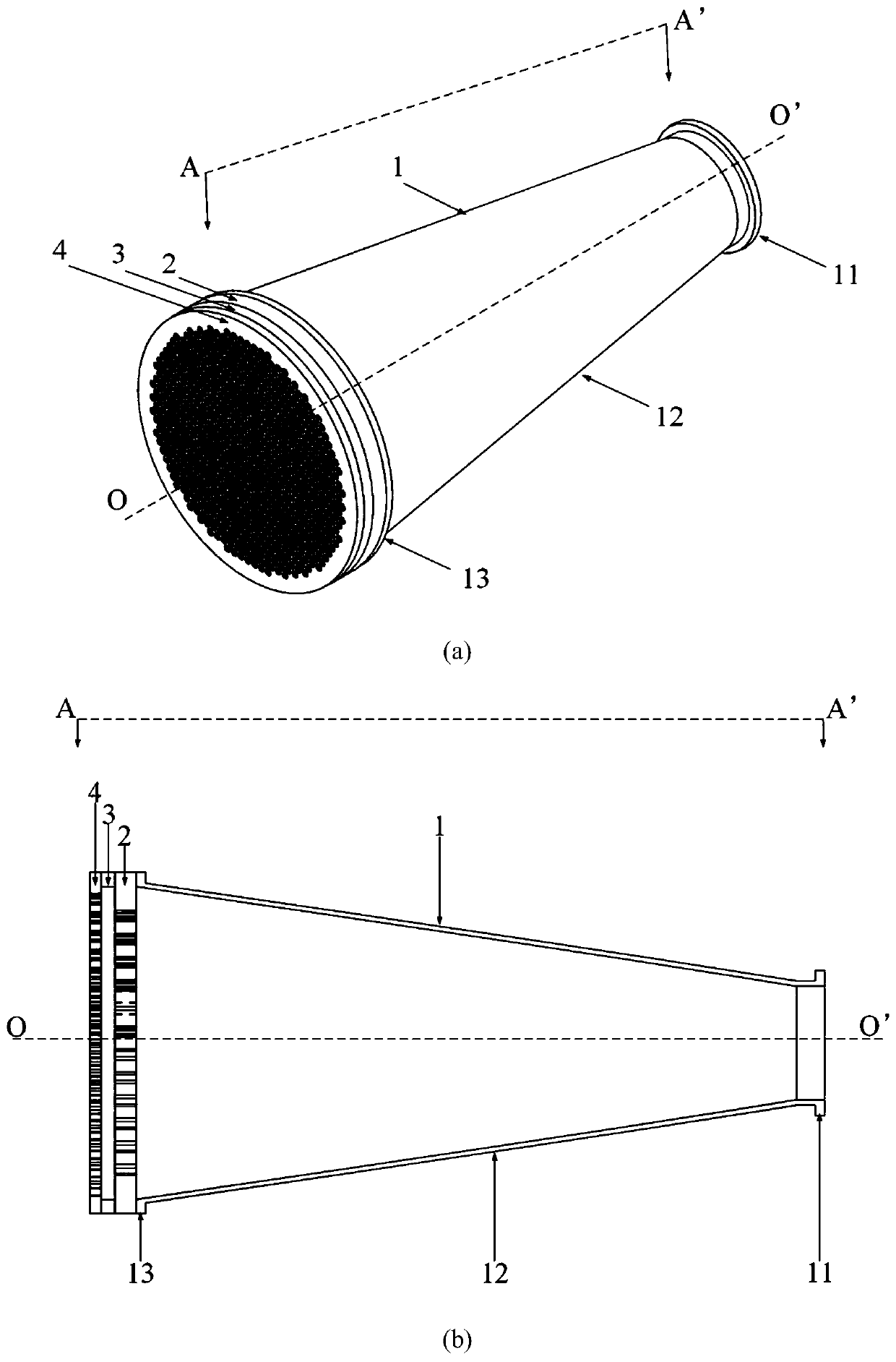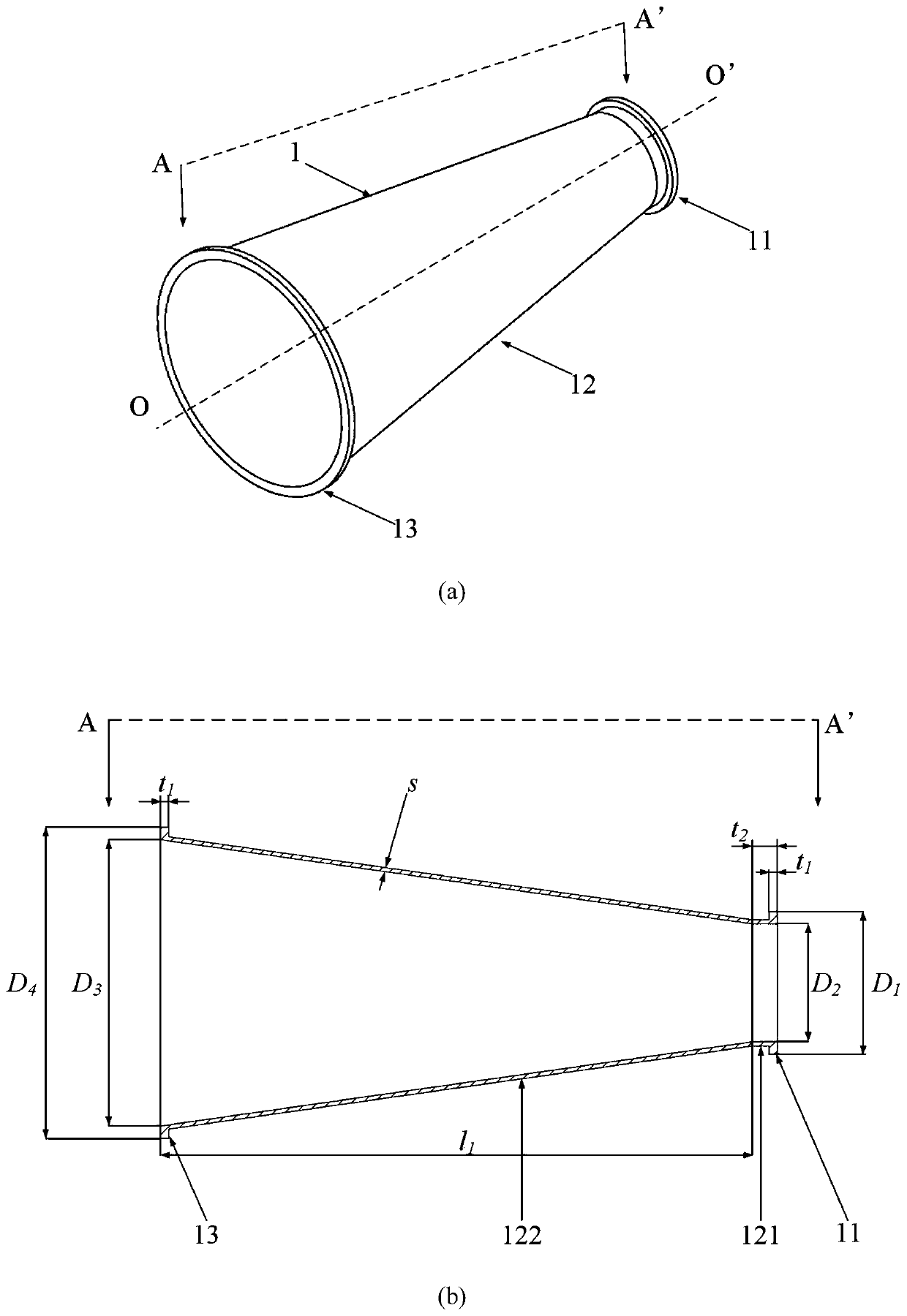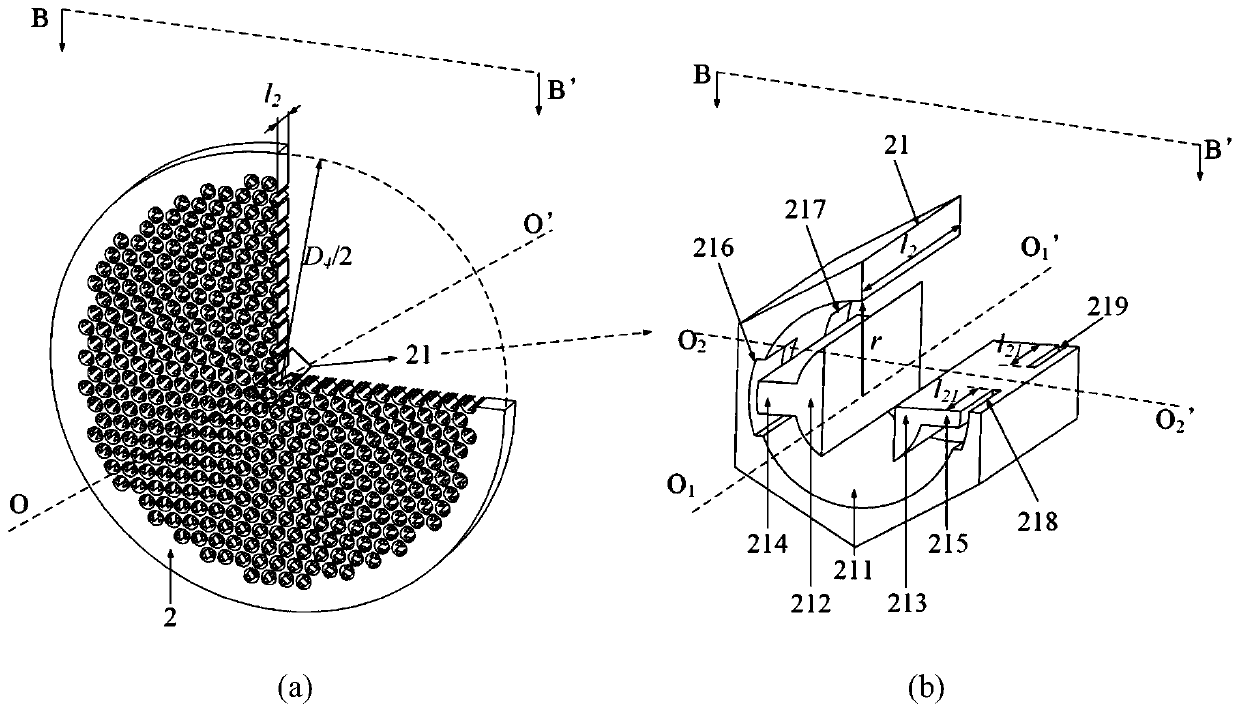High-power mode conversion super-lens antenna capable of realizing beam deflection
A high-power mode and mode conversion technology, applied in the field of radiation antennas, can solve the problems of lack of mode conversion, polarization conversion beam deflection function, redundant axial structure, large transmission loss, etc.
- Summary
- Abstract
- Description
- Claims
- Application Information
AI Technical Summary
Problems solved by technology
Method used
Image
Examples
Embodiment 1
[0058] Design center frequency f=4.3GHz (that is, the frequency of the input microwave source is 4.3GHz, and the corresponding microwave wavelength is 69.77mm) embodiment specific design dimensions of the high-power microwave mode conversion metalens antenna:
[0059] The horn antenna 1 adopts a conical horn antenna, wherein the inner diameter D of the circular waveguide 121 and the conical waveguide 122 in the conical horn 12 is close to the microwave source end 2 =62mm, circular waveguide 121 length t 2 =30mm, the inner diameter D of the conical waveguide 122 away from the microwave source end 3 =380mm, axial length l 1 =517.4mm; the outer diameter of the first flange 11 D 1 =92mm, the outer diameter of the second flange 13 D 4 =410mm, the thicknesses of the first flange 11 and the second flange 13 are both t 1 =10mm, waveguide wall thickness s=5mm; the diameters of the polarization conversion lens 2 and the mode conversion lens 4 are equal to the outer diameter of the s...
PUM
 Login to View More
Login to View More Abstract
Description
Claims
Application Information
 Login to View More
Login to View More - R&D Engineer
- R&D Manager
- IP Professional
- Industry Leading Data Capabilities
- Powerful AI technology
- Patent DNA Extraction
Browse by: Latest US Patents, China's latest patents, Technical Efficacy Thesaurus, Application Domain, Technology Topic, Popular Technical Reports.
© 2024 PatSnap. All rights reserved.Legal|Privacy policy|Modern Slavery Act Transparency Statement|Sitemap|About US| Contact US: help@patsnap.com










